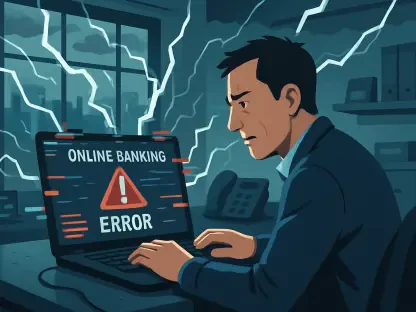In a bold move that has sent ripples through the financial sector, the Trump administration has embarked on a comprehensive overhaul of U.S. banking regulations, aiming to dismantle what it views as burdensome restrictions on major financial institutions. This sweeping policy shift targets stringent capital requirements, particularly those tied to the Basel Endgame rules established under previous administrations, which enforced rigorous standards on large banks. With key figures like Travis Hill, Federal Reserve Vice Chair for Supervision and nominee for FDIC leadership, steering the initiative, the goal is to liberate substantial capital—potentially up to $100 billion across the industry—for lending and shareholder returns. This deregulation effort is not just a rollback but a redefinition of how banks manage risk, setting the stage for a heated debate over the balance between economic growth and financial stability. As the changes unfold, stakeholders from Wall Street to Capitol Hill are weighing in on the potential consequences of such a transformative approach.
Deregulation Drive and Industry Optimism
The core of this regulatory overhaul lies in easing capital requirements that many in the banking sector have long criticized as overly restrictive, hampering their ability to fuel economic growth. Industry leaders from prominent institutions like JPMorgan and Bank of America have expressed significant relief, anticipating not only a halt to previously proposed capital hikes but even possible reductions. Beyond capital rules, the administration’s broader agenda includes facilitating smoother merger approvals and integrating cryptocurrency activities into mainstream banking operations. This multifaceted approach is seen by proponents as a way to enhance flexibility, allowing banks to allocate resources more effectively. Supporters argue that freeing up capital will enable increased lending to businesses and consumers, potentially spurring economic vitality at a time when global challenges like inflation persist. The optimism within the industry is palpable, with many executives viewing these changes as a critical step toward a more dynamic financial landscape that prioritizes innovation over constraint.
Furthermore, the scope of deregulation signals a fundamental shift in policy that could redefine the competitive environment for banks over the coming years, with implementation anticipated by mid-2026. This timeline suggests a rapid transformation, as financial institutions prepare for a lighter regulatory burden that promises to unlock significant economic potential. The prospect of reduced oversight is particularly appealing to larger banks, which have often borne the brunt of post-crisis regulations designed to prevent systemic failures. Industry stakeholders are already strategizing on how to reinvest the freed-up capital, whether through expanded loan portfolios or enhanced shareholder returns. However, while the immediate benefits seem clear to advocates, the long-term impact on market dynamics remains uncertain. The enthusiasm from the banking sector is tempered by questions about whether this newfound freedom might come at the cost of oversight mechanisms that have historically safeguarded the economy from excessive risk-taking.
Concerns Over Financial Stability
On the flip side of the debate, critics of the deregulation push are sounding alarms over the potential erosion of financial stability, drawing sobering parallels to the 2008 crisis that reshaped global markets. Many argue that loosening post-crisis safeguards, which were painstakingly put in place to protect against systemic failures, could expose the economy to significant vulnerabilities. Voices like Senator Sheldon Whitehouse have highlighted additional risks, including the neglect of climate-related financial threats and the broader economic ramifications of prioritizing short-term gains over long-term resilience. The concern is that while banks may thrive in the immediate aftermath of deregulation, the lack of stringent oversight could pave the way for reckless practices, especially in an era marked by geopolitical tensions and economic uncertainty. This perspective underscores a fundamental tension: the pursuit of growth must be balanced against the imperative to shield the financial system from catastrophic downturns.
Moreover, the diversity of dissenting opinions reflects a nuanced and complex discussion that extends beyond immediate policy changes to the very principles of financial governance. Critics contend that the administration’s focus on deregulation overlooks critical lessons from past crises, where insufficient capital buffers and lax oversight contributed to widespread economic hardship. There’s also apprehension about how reduced regulatory scrutiny might affect smaller banks, which may struggle to compete in a landscape increasingly tailored to the advantage of larger players. The integration of volatile sectors like cryptocurrency into banking activities adds another layer of risk, with skeptics warning of untested waters that could destabilize the system if not carefully managed. As these concerns gain traction among policymakers and advocacy groups, the debate continues to evolve, emphasizing the need for a cautious approach to ensure that the drive for economic expansion does not undermine the foundational stability of the financial sector.
Balancing Growth and Risk in Retrospect
Reflecting on the unfolding saga, the Trump administration’s aggressive push to reshape banking regulations marked a pivotal moment in financial policy history, igniting both hope and apprehension across the spectrum. The initiative to reduce capital requirements and ease oversight was celebrated by industry giants as a means to stimulate lending and innovation, yet it drew sharp criticism for potentially jeopardizing systemic safeguards. As the reforms progressed toward their expected rollout, the contrasting views of proponents and detractors painted a picture of a deeply divided landscape, where the allure of economic growth clashed with the specter of past crises. Looking back, the critical takeaway was the necessity for ongoing vigilance and adaptive strategies to monitor the outcomes of such sweeping changes. Future considerations hinged on establishing mechanisms to track risk management practices and ensuring that regulatory frameworks could evolve to address emerging challenges without stifling opportunity, providing a roadmap for policymakers to navigate the delicate interplay of progress and protection.









